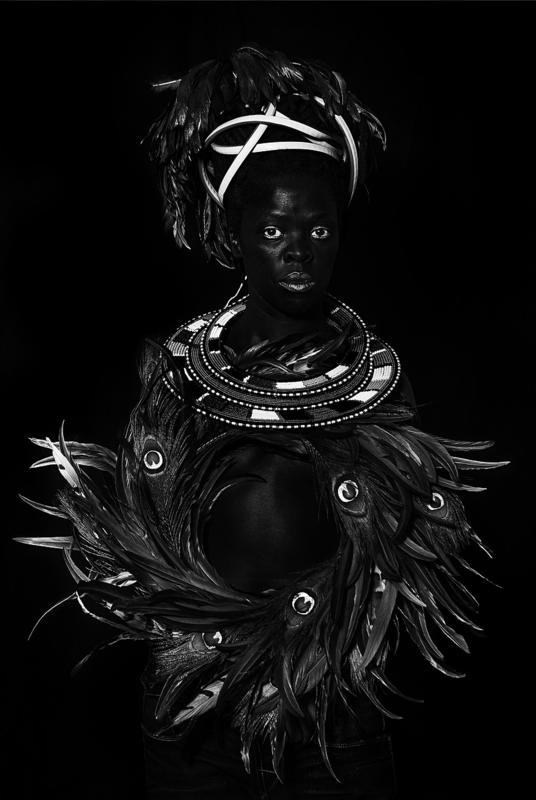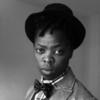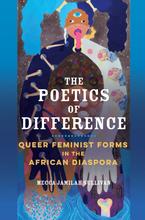More about Ngwane I, Oslo
- All
- Info
- Shop

Sr. Editor
After gaining recognition in the art world for their documentarian portraits of the Black LGBTQI+ community in South Africa, Zanele Muholi turns the lens around to create striking self-portraits like Ngwame I, Oslo.
As is also the case with self-portraiture by Carrie Mae Weems or Cindy Sherman, Zanele Muholi’s self-portraits are both a defiant reclamation of the gaze, and a performative commentary on representations of the feminine body we normally see, in art history and in culture more generally. In this case, Muholi specifically addresses way Black bodies are most often portrayed.
Ngwane I, Oslo is from a series of work titled “Somnyama Ngonyama” (“Hail the Dark Lioness” in Zulu) in which Muholi poses in different costumes, props, and backdrops that evoke a range of issues, from the violent South African history of apartheid to the artist’s own life-threatening experience undergoing uterine surgery. The resulting photographs act as provocative reflections on race, gender, and representation.
In Ngwane I, Oslo, Muholi intentionally darkens the contrast of the photo, so that their complexion would almost merge with the black backdrop, yet their skin glistens and thus creates different textures of black within the composition. Growing up in a culture that told them dark skin was undesirable and where Blackness was punished, Muholi’s self-portraits emphasize and celebrate the color of their skin. Muholi says, “‘When I was young, I was told that I was ugly, and I had to grow up with a sense of ugliness and shame. And I had to overcome it, because nobody can love you more than you.’’
Muholi’s dress in this photograph seems to also be a celebration of their people’s history and culture. While “Oslo” in the title most likely refers to Norway, where perhaps the photograph was taken (Muholi stages these self-portraits as they travel around the globe and often includes the location in the title), “Ngwane” may refer to the historical name for Eswatini (formerly Swaziland), a country which neighbors South Africa and to which South Africa has strong cultural and historical ties. Ngwane III was the first King of modern Eswatini in the 18th century, and the King was, and still is, referred to as “the lion,” the animal also evoked in the series title. Muholi certainly looks like royalty in this portrait, with their feathered headdress and intricate beadwork necklace. Beadwork is especially important in Zulu culture and carries complex cultural meaning depending on the area, occasion, color, and wearer. In this case, however, the symbolism of the beadwork is not made known.
The Guggenheim has referred to Muholi in this portrait as an “avian goddess,” which is fitting, as there seems to be some suggestion of the feminine divine here. The round of feathers and lighting almost make Muholi appear pregnant, so the portrait could be read as a celebration of Black womanhood, or of Africa as the “mother continent,” the birthplace of all humankind. At the same time, Muholi’s dead-eyed stare challenges the viewer. The traditional costume makes the photo reminiscent of the exploitative, National Geographic-type images that proliferate in the West. As journalist Jenna Wortham puts it, “[Their] self-portraits explode stereotypes of African women while evoking them, implicating the viewers for summoning those clichés as they gaze upon [their] skin.”
In this way, Muholi references the dehumanizing effect of imagery in which the people pictured are treated as material objects to be consumed, rather than subjects with autonomous power. Africa and African people have so often been the subjects of a non-specific imagined colonial fantasy that is not based in the reality of people’s lived experiences, rich histories, and distinct cultures. The portrait evokes these incomplete, misguided, or outright harmful representations, and also presents a refusal of them. The spots on the feathers almost look like camouflage, like the eyes on a butterfly’s back that deter prey, perhaps a warning to the viewer - a challenge to their gaze and their assumptions about the figure staring back.
Sources
- O'Hagan, S. (2020, November 2). Zanele Muholi's Queer South Africa. The Guardian. Retrieved May 19, 2022, from https://www.theguardian.com/artanddesign/2020/nov/02/zanele-muholi-inte…
- Saner, E. (2017, July 14). Zanele Muholi's 365 protest photographs. The Guardian. Retrieved May 19, 2022, from https://www.theguardian.com/artanddesign/2017/jul/14/zanele-muholi-365-…
- Scott, A. K. (2017, October 20). The fever-dream urgency of Zanele Muholi's self-portraits in "Somnyama ngonyama". The New Yorker. Retrieved May 19, 2022, from https://www.newyorker.com/culture/photo-booth/the-fever-dream-urgency-o…
- Willis, R. (2019, May 3). Zanele Muholi forever changed the image of Black Queer South africans. Out. Retrieved May 19, 2022, from https://www.out.com/art/2019/4/23/zanele-muholi-forever-changed-image-b…
- Wortham, J. (2015, October 8). Zanele Muholi's transformations. The New York Times. Retrieved May 19, 2022, from https://www.nytimes.com/2015/10/11/magazine/zanele-muholis-transformati…












